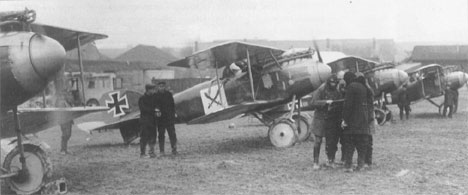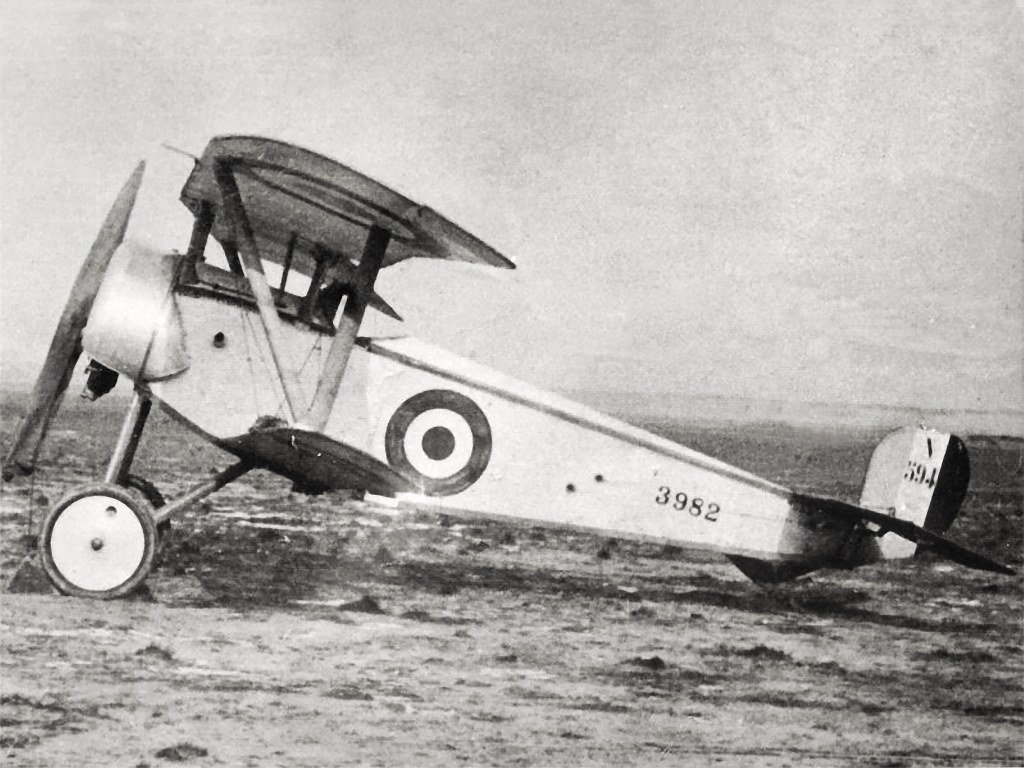|
Kurt Arthur Benno Student
Kurt Arthur Benno Student (12 May 1890 – 1 July 1978) was a German general in the Luftwaffe during World War II. An early pioneer of airborne forces, Student was in overall command of developing a paratrooper force to be known as the ''Fallschirmjäger'', and as the most senior member of the ''Fallschirmjäger'', commanded it throughout the war. Student led the first major airborne attack in history, the Battle for The Hague, in May 1940. He also commanded the ''Fallschirmjäger'' in its last major airborne operation, the invasion of Crete in May 1941. The operation was a success despite German losses, and led the Allies to hasten the training and development of their own airborne units. In 1947, Student was tried and convicted of war crimes for the mistreatment and murder of prisoners of war by his men in Crete. Student was also responsible for a wave of reprisal massacres committed against Cretan civilians in 1941 but avoided harsh punishment. Early life and career Stude ... [...More Info...] [...Related Items...] OR: [Wikipedia] [Google] [Baidu] |
German Empire
The German Empire (),Herbert Tuttle wrote in September 1881 that the term "Reich" does not literally connote an empire as has been commonly assumed by English-speaking people. The term literally denotes an empire – particularly a hereditary empire led by an emperor, although has been used in German to denote the Roman Empire because it had a weak hereditary tradition. In the case of the German Empire, the official name was , which is properly translated as "German Empire" because the official position of head of state in the constitution of the German Empire was officially a "presidency" of a confederation of German states led by the King of Prussia who would assume "the title of German Emperor" as referring to the German people, but was not emperor of Germany as in an emperor of a state. –The German Empire" ''Harper's New Monthly Magazine''. vol. 63, issue 376, pp. 591–603; here p. 593. also referred to as Imperial Germany, the Second Reich, as well as simply Germany, ... [...More Info...] [...Related Items...] OR: [Wikipedia] [Google] [Baidu] |
Military Gliders
Military gliders (an offshoot of common gliders) have been used by the militaries of various countries for carrying troops (glider infantry) and heavy equipment to a combat zone, mainly during the Second World War. These engineless aircraft were towed into the air and most of the way to their target by military transport planes, e.g., C-47 Skytrain or Dakota, or bombers relegated to secondary activities, e.g., Short Stirling. Most military gliders do not soar, although there were attempts to build military sailplanes as well, such as the DFS 228. Once released from the tow craft near the front, they were to land on any convenient open terrain close to the target, hopefully with as little damage to the cargo and crew as possible as most landing zones (LZ) were far from ideal. The one-way nature of the missions meant that they were treated as semi-expendable leading to construction from common and inexpensive materials such as wood. Most nations seriously attempted to recover as ... [...More Info...] [...Related Items...] OR: [Wikipedia] [Google] [Baidu] |
Jasta 9
Royal Prussian Jagdstaffel 9 was a "hunting group" (fighter squadron) of the ''Luftstreitkräfte'', the air arm of the Imperial German Army during World War I. Although the squadron, and the ''Luftstreitkräfte'', were short-lived, they had great influence on the Nazi ''Luftwaffe'', as can be seen by the later careers of the unit's ''Staffelführer''. It was founded on 28 September 1916, and by the time it disbanded on 15 January 1919, it was credited with 107 aerial victories. In turn, it had suffered thirteen pilots killed in combat, three wounded, five non-combat deaths, and three injuries. History When Jagdstaffel 9 was founded, it absorbed the pre-existing Fokkerstaffel attached to 3 Armee. This ad hoc Fokkerstaffel had been formed under Oberleutnant Ascheberg on 16 June 1916. He relinquished this unit to Oberleutnant Kurt Student on 23 September. The unit was officially founded five days later; it mobilized a week later, and moved to Leffincourt. It remained operational at t ... [...More Info...] [...Related Items...] OR: [Wikipedia] [Google] [Baidu] |
3rd Army (German Empire)
The 3rd Army (german: 3. Armee / Armeeoberkommando 3 / A.O.K. 3) was an army level command of the German Army in World War I. It was formed on mobilization in August 1914 seemingly from the II Army Inspectorate. The army was disbanded in 1919 during demobilization after the war. History Upon the mobilization Max von Hausen (Saxon War Minister) was given command of the 3rd Army which mainly consisted of Saxons. The army participated in the Battle of the Frontiers, mainly in the Battle of Dinant and the Battle of Charleroi and the army were responsible for the destruction of Reims in September 1914. When the 2nd Army retreated after the First Battle of the Marne, Hausen saw his flank exposed and ordered a retreat. Upon the stabilization of the front on the river Aisne, Hausen was relieved of his command and replaced by General Karl von Einem. Repulsing the French First Battle of Champagne (the Champagne-Marne offensive) from February–March and Second Battle of Champagne (S ... [...More Info...] [...Related Items...] OR: [Wikipedia] [Google] [Baidu] |
Nieuport 11
The Nieuport 11 (or Nieuport XI C.1 in contemporary sources), nicknamed the ''Bébé'', was a French World War I single seat sesquiplane fighter aircraft, designed by Gustave Delage. It was the primary aircraft that ended the Fokker Scourge in 1916.Chant & Taylor 2007, p. 14. The type saw service with several of France's allies, and gave rise to the series of "vee-strut" Nieuport fighters that remained in service (latterly as trainers) into the 1920s. Design and development The Nieuport 11 was a scaled down development of the Nieuport 10, designed specifically as a single-seat fighter. Like the "10" the "11" was a sesquiplane, a biplane with a full-sized top wing with two spars, and a lower wing of much narrower chord and a single spar. Interplane struts in the form of a "Vee" joined the upper and lower wings. The sesquiplane layout reduced drag and improved the rate of climb, as well as offering a better view from the cockpit than either biplane or monoplane, while being su ... [...More Info...] [...Related Items...] OR: [Wikipedia] [Google] [Baidu] |
Lieutenant
A lieutenant ( , ; abbreviated Lt., Lt, LT, Lieut and similar) is a commissioned officer rank in the armed forces of many nations. The meaning of lieutenant differs in different militaries (see comparative military ranks), but it is often subdivided into senior (first lieutenant) and junior (second lieutenant and even third lieutenant) ranks. In navies, it is often equivalent to the army rank of captain; it may also indicate a particular post rather than a rank. The rank is also used in fire services, emergency medical services, security services and police forces. Lieutenant may also appear as part of a title used in various other organisations with a codified command structure. It often designates someone who is " second-in-command", and as such, may precede the name of the rank directly above it. For example, a "lieutenant master" is likely to be second-in-command to the "master" in an organisation using both ranks. Political uses include lieutenant governor in various g ... [...More Info...] [...Related Items...] OR: [Wikipedia] [Google] [Baidu] |
Fähnrich
Fähnrich () is an officer candidate rank in the Austrian Bundesheer The Austrian Armed Forces (german: Bundesheer, lit=Federal Army) are the combined military forces of the Republic of Austria. The military consists of 22,050 active-duty personnel and 125,600 reservists. The military budget is 0.74% of natio ... and German Bundeswehr. The word comes from an older German military title, (flag bearer), and first became a distinct military rank in Germany on 1 January 1899. However, ranks are often incorrectly compared with the Ensign (rank), rank of ensign, which shares a similar etymology but is a full-fledged (albeit junior) commissioned officer rank. In the German Landsknecht armies, recorded from ca. 1480, the equivalent rank of a Cornet (military rank), Cornet existed. The cornet carried the troop standard, also known as a "cornet". The rank also exists in a few other European military organizations, often with historical ties to the German system. Examples ar ... [...More Info...] [...Related Items...] OR: [Wikipedia] [Google] [Baidu] |
Battle Of Crete
The Battle of Crete (german: Luftlandeschlacht um Kreta, el, Μάχη της Κρήτης), codenamed Operation Mercury (german: Unternehmen Merkur), was a major Axis airborne and amphibious operation during World War II to capture the island of Crete. It began on the morning of 20 May 1941, with a multiple German airborne landings on Crete. Greek and other Allied forces, along with Cretan civilians, defended the island. After only one day of fighting, the Germans had suffered heavy casualties and the Allied troops were confident that they would defeat the invasion. The next day, through communication failures, Allied tactical hesitation, and German offensive operations, Maleme Airfield in western Crete fell, enabling the Germans to land reinforcements and overwhelm the defensive positions on the north of the island. Allied forces withdrew to the south coast. More than half were evacuated by the British Royal Navy and the remainder surrendered or joined the Cretan resistance. T ... [...More Info...] [...Related Items...] OR: [Wikipedia] [Google] [Baidu] |


